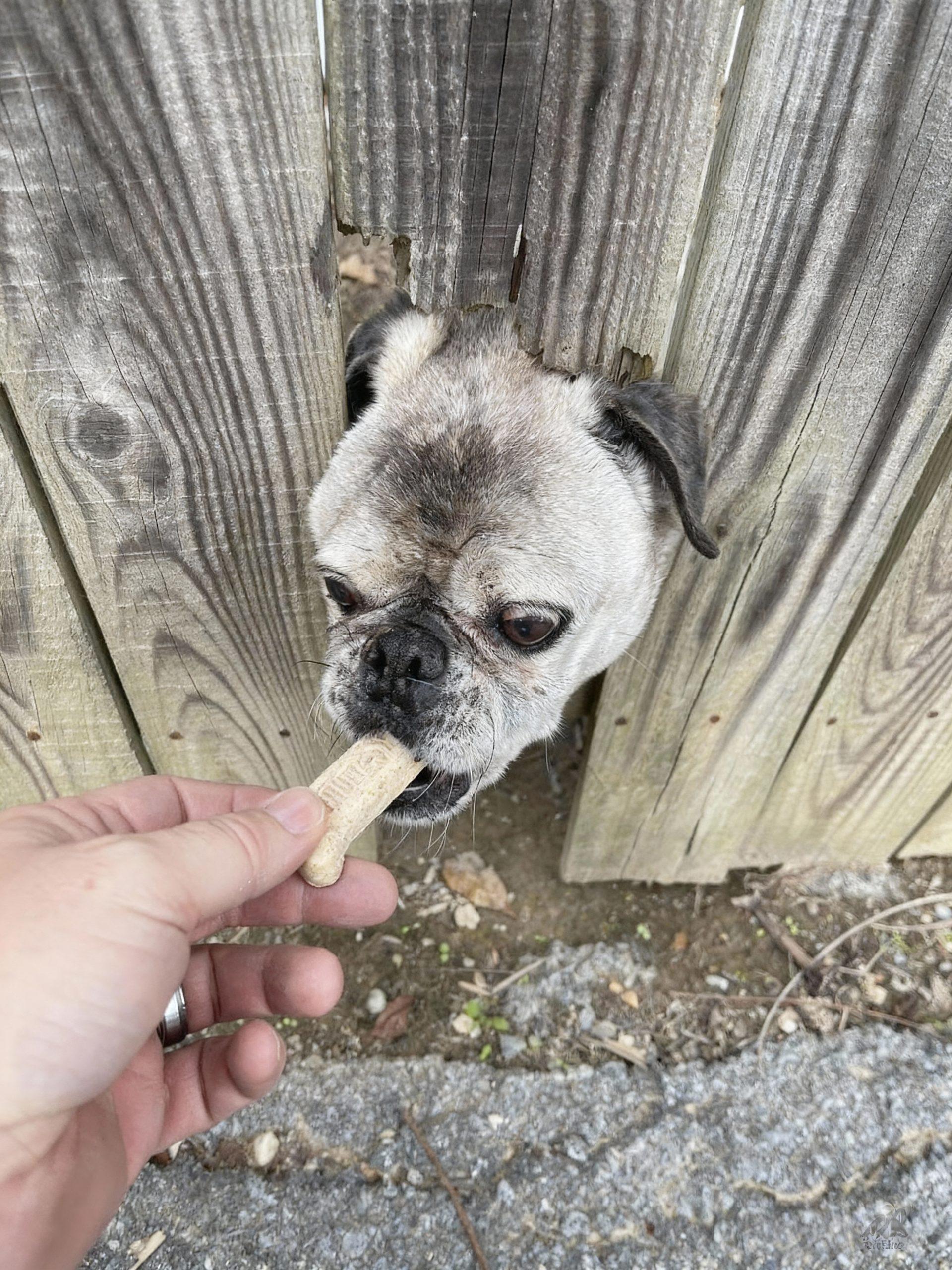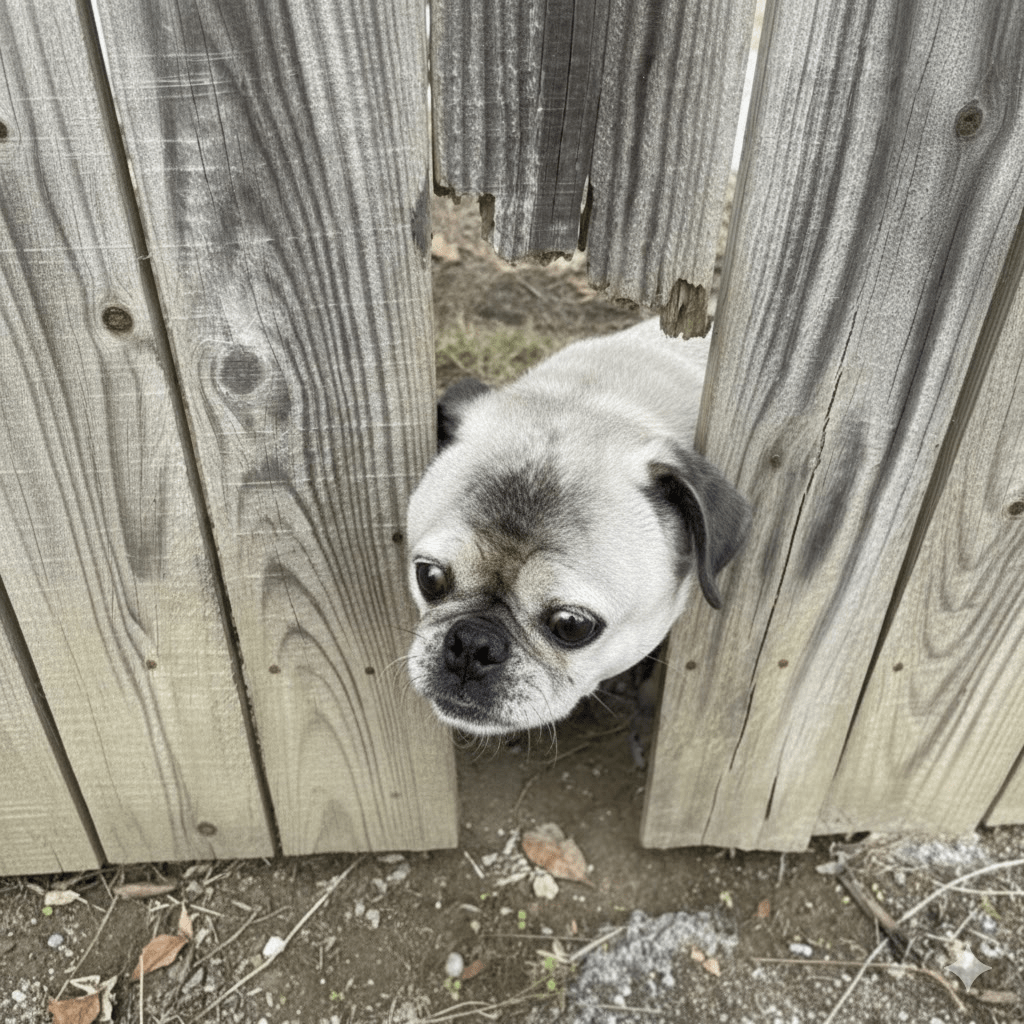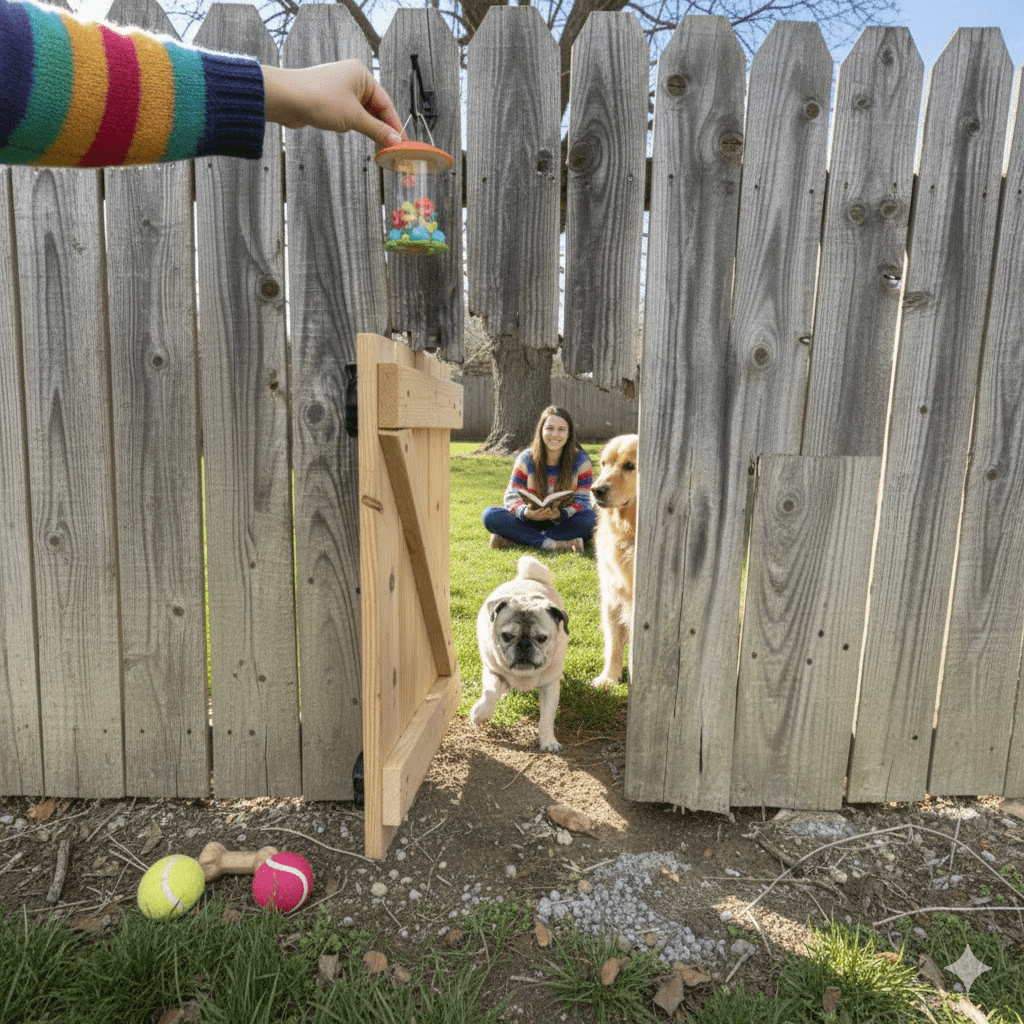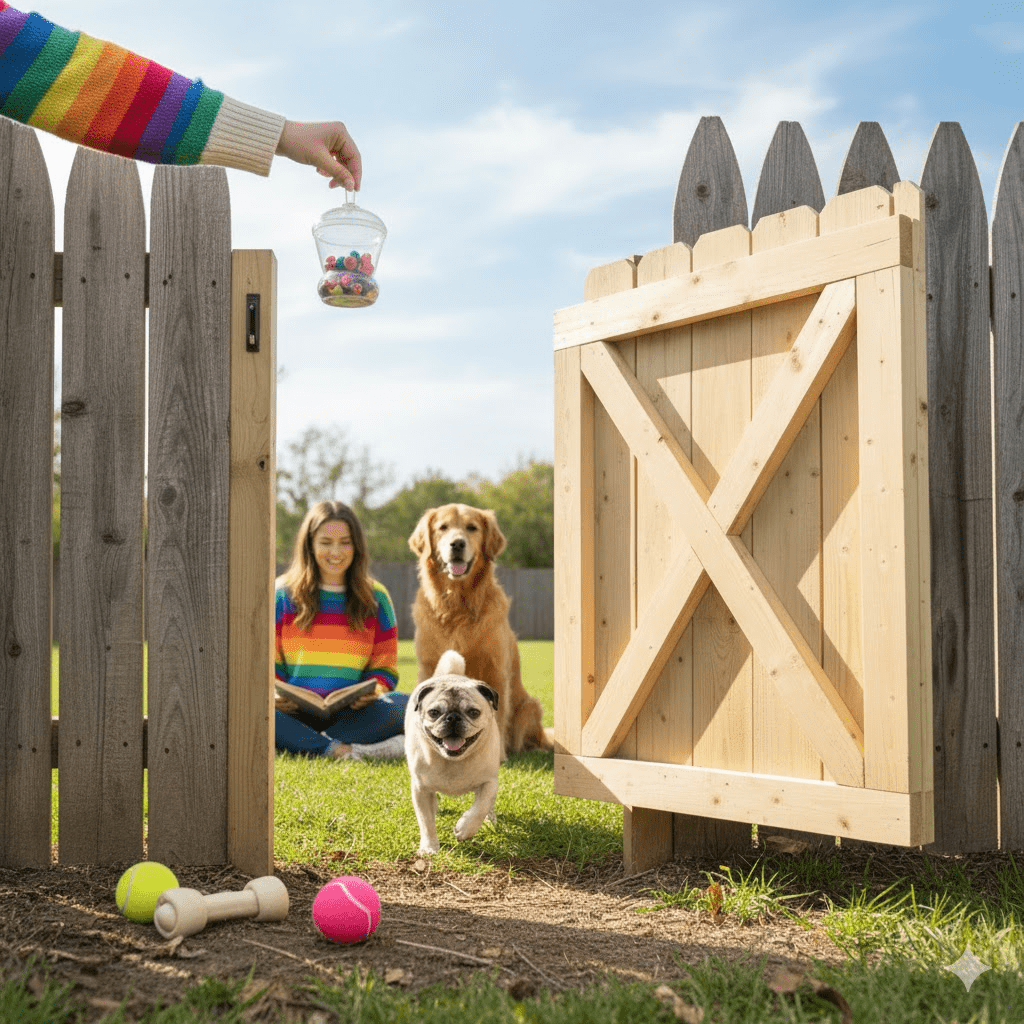There’s something inherently charming about a dog’s inquisitive nature, and few sights capture this better than a furry face peeking through an unexpected opening. The image before us – a pug’s earnest gaze emerging from a weathered wooden fence, its snout reaching for a proffered treat – speaks volumes about the simple joys of interaction, the boundaries we build, and the ways in which our canine companions ingeniously navigate them. This seemingly ordinary moment encapsulates a deeper narrative about animal behavior, the human-animal bond, and even the subtle art of communication that transcends spoken language. It invites us to ponder the world from a dog’s perspective, where a small gap in a fence can be a window to new smells, new friends, and the promise of a delightful reward. This article delves into the fascinating aspects hinted at by this charming scene, exploring the instincts that drive such curiosity, the methods dogs employ to connect with their environment and us, and the profound impact these interactions have on their well-being and our own.

Dog psychology often highlights the importance of sensory exploration. A dog’s world is largely defined by scent, and any opening, no matter how small, represents an opportunity to gather new information. The gap in the fence, in this context, becomes a highly stimulating portal. Beyond the visual appeal, the pug is likely processing a symphony of smells – the scent of the person offering the treat, the aroma of the treat itself, and the general olfactory landscape of the “outside” world. This constant seeking of sensory input is a fundamental part of canine cognition, driving their exploration and understanding of their surroundings. Their keen sense of smell, far surpassing our own, allows them to construct a detailed mental map of their environment, constantly updated by these brief but information-rich encounters.

However, it’s not just about what’s out there. The act of reaching for the treat, as depicted, is a clear instance of motivated behavior. Dogs, being highly intelligent and opportunistic creatures, quickly learn to associate certain actions with positive outcomes. The person offering the treat is not just a hand, but a source of gratification. This interaction reinforces the pug’s understanding that venturing to this specific spot can lead to a reward. Such learned behaviors are crucial in shaping a dog’s daily routine and their interactions with both humans and their environment. This positive reinforcement strengthens the bond between dog and human, demonstrating trust and mutual understanding in a simple yet profound gesture.

One key aspect highlighted by this image is the cleverness of dogs in adapting to their surroundings. Fences are built to delineate boundaries, yet this pug has found a way to bridge that divide. This demonstrates a form of problem-solving – identifying an opportunity and utilizing it to achieve a desired outcome. Whether the hole was pre-existing or a result of the pug’s persistent efforts, the dog’s willingness to exploit it showcases its resourcefulness. This adaptability is a testament to the evolutionary success of canines, allowing them to thrive in various environments, both wild and domesticated.







